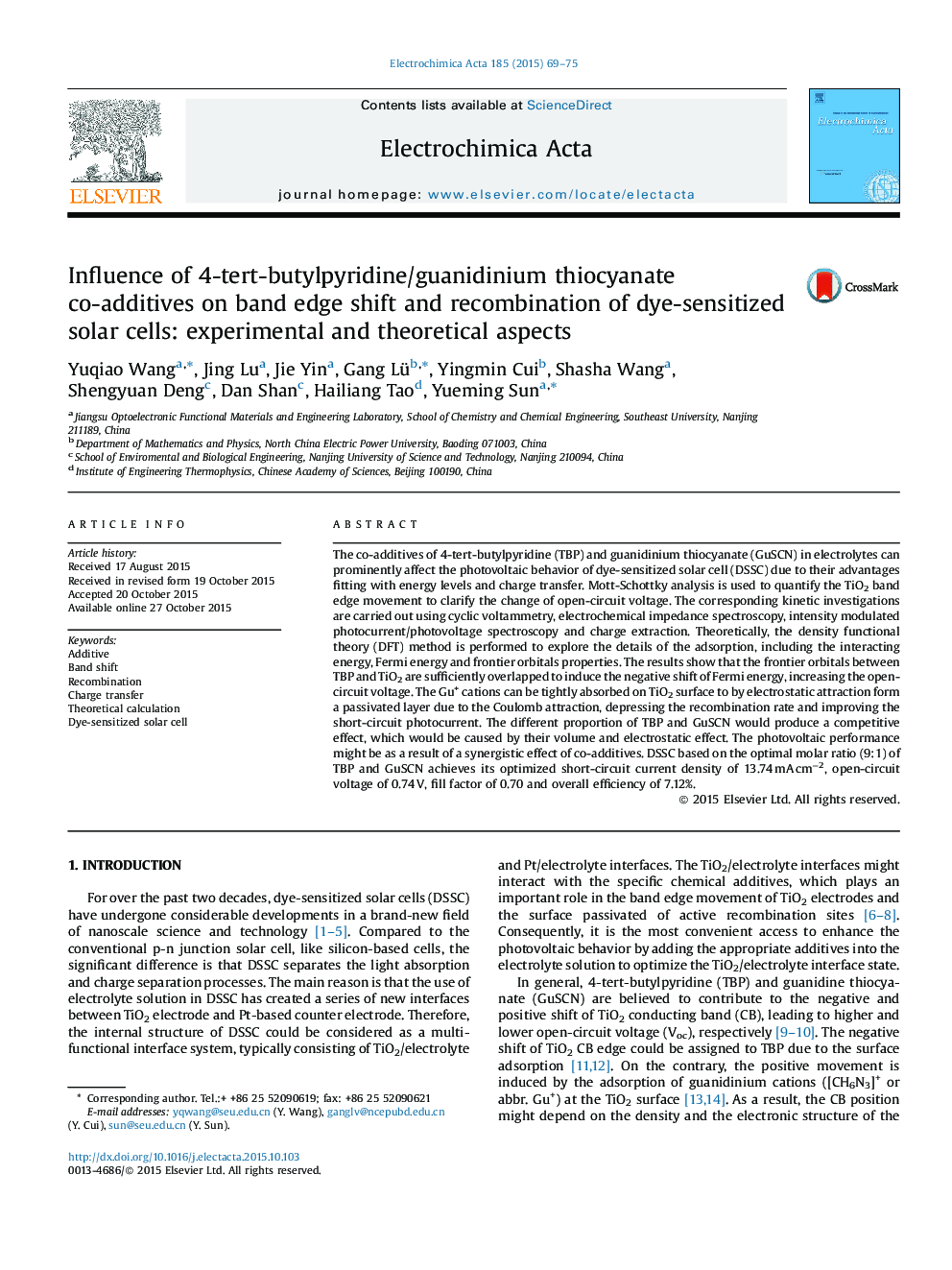| کد مقاله | کد نشریه | سال انتشار | مقاله انگلیسی | نسخه تمام متن |
|---|---|---|---|---|
| 183433 | 459547 | 2015 | 7 صفحه PDF | دانلود رایگان |
• The frontier orbitals between 4-tert-butylpyridine and TiO2 are sufficiently overlapped to induce the negative shift of Fermi energy, increasing the open-circuit voltage.
• The guanidinium cations can be tightly absorbed on TiO2 surface by electrostatic attraction to form a passivated layer, depressing the recombination rate and improving the short-circuit photocurrent.
• The photovoltaic performance might be as a result of a synergistic effect of co-additives due to the competitive effect between volume and electrostatic effect.
ABSTRACTThe co-additives of 4-tert-butylpyridine (TBP) and guanidinium thiocyanate (GuSCN) in electrolytes can prominently affect the photovoltaic behavior of dye-sensitized solar cell (DSSC) due to their advantages fitting with energy levels and charge transfer. Mott-Schottky analysis is used to quantify the TiO2 band edge movement to clarify the change of open-circuit voltage. The corresponding kinetic investigations are carried out using cyclic voltammetry, electrochemical impedance spectroscopy, intensity modulated photocurrent/photovoltage spectroscopy and charge extraction. Theoretically, the density functional theory (DFT) method is performed to explore the details of the adsorption, including the interacting energy, Fermi energy and frontier orbitals properties. The results show that the frontier orbitals between TBP and TiO2 are sufficiently overlapped to induce the negative shift of Fermi energy, increasing the open-circuit voltage. The Gu+ cations can be tightly absorbed on TiO2 surface to by electrostatic attraction form a passivated layer due to the Coulomb attraction, depressing the recombination rate and improving the short-circuit photocurrent. The different proportion of TBP and GuSCN would produce a competitive effect, which would be caused by their volume and electrostatic effect. The photovoltaic performance might be as a result of a synergistic effect of co-additives. DSSC based on the optimal molar ratio (9:1) of TBP and GuSCN achieves its optimized short-circuit current density of 13.74 mA cm−2, open-circuit voltage of 0.74 V, fill factor of 0.70 and overall efficiency of 7.12%.
Graphical AbstractThe frontier orbitals between 4-tert-butylpyridine and TiO2 are sufficiently overlapped to induce the negative shift of Fermi energy, increasing the open-circuit voltage. The guanidinium cations can be tightly absorbed on TiO2 surface to form a passivated layer, depressing the recombination rate and improving the short-circuit photocurrent. The photovoltaic performance might be as a result of a synergistic effect of co-additives due to the competitive effect between volume and electrostatic effect.Figure optionsDownload as PowerPoint slide
Journal: Electrochimica Acta - Volume 185, 10 December 2015, Pages 69–75
